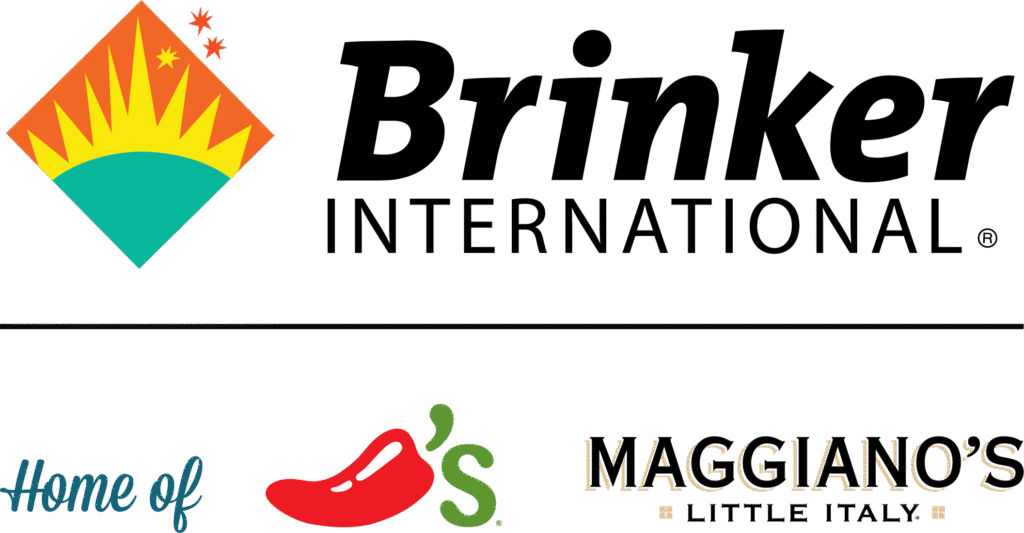1. Company Overview
Brinker International, Inc., trading under ticker EAT, is a publicly traded company headquartered in Dallas, Texas. It owns and franchises popular casual-dining chains, most notably Chili’s Grill & Bar and Maggiano’s Little Italy. The company operates globally, with over 1,600 restaurants across the U.S. and international markets. Founded in 1991, Brinker has established a reputation for menu innovation and operational consistency. Kevin Hochman serves as CEO and President, guiding the firm’s growth strategy.

2. Most Recent Earnings
In its fourth quarter of fiscal 2025, Brinker reported adjusted EPS of $2.49, beating analyst expectations of approximately $2.47–$2.44 by $0.02–$0.05. Revenue was robust at $1.46 billion, exceeding consensus estimates near $1.42–$1.44 billion. Same-store sales at Chili’s surged by around 23.7%–24%, while overall comparable sales grew over 21%. The company provided rosy guidance for fiscal 2026, expecting revenue between $5.6 and $5.7 billion and adjusted EPS between $9.90 and $10.50, both ahead of Wall Street forecasts.
3. Founding & Background
Brinker International evolved from Chili’s Grill & Bar, originally founded in 1975 by Larry Lavine. Norman E. Brinker later acquired and grew the brand, rebranding the enterprise as Brinker International in 1991. The company expanded over time through acquisitions (e.g., Maggiano’s in 1995) and divestitures (Corner Bakery Cafe, Romano’s Macaroni Grill), enhancing its portfolio and international reach.
4. Products & Brands
Brinker’s core offerings are casual-dining experiences with menu staples like burgers, Tex‑Mex, and Italian cuisine. Chili’s is known for value-focused promotions (e.g., “3 for me” meals), menu simplification, and viral marketing items like Nashville Hot Mozzarella and revamped ribs. Maggiano’s offers an upscale Italian dining experience.
5. Key Competitors
Key competitors include The Cheesecake Factory, Darden Restaurants (Olive Garden, LongHorn Steakhouse), Bloomin’ Brands, Texas Roadhouse, El Pollo Loco, Shake Shack, Domino’s, and others in the sit‑down casual dining space.
6. Market Landscape
Brinker operates in the casual‑dining sector, which is experiencing a notable revival driven by value‑oriented offerings, improved dining experiences, and economic resilience among middle‑class consumers. Recent trends show Chili’s same‑store sales growing 24%, defying faster price increases seen in fast food. Casual‑dining chains benefit from structural shifts such as remote work and enhanced delivery.
7. Market Growth Outlook
While precise CAGR forecasts to 2030 are not readily available, industry data from Simply Wall St projects Brinker’s revenue growth at approximately 4.8% CAGR over the next three years, notably lower than the broader U.S. hospitality industry average of around 9.9%.
8. Market Position & Differentiation
Brinker’s differentiation lies in its strong brand recognition, operational agility, menu innovation, and marketing prowess. Brands like Chili’s have resonated with consumers via highly visible promotions, social‑media buzz, and refreshed in‑store experiences. Maggiano’s offers a complementary upscale dining choice, helping differentiate Brinker from competitors.
9. Management Team Overview
- Kevin Hochman, President and CEO, has spearheaded Brinker’s turnaround through aggressive marketing investments and menu simplification.
- Mika Ware, EVP & CFO since mid‑2024, brings financial leadership following Joe Taylor’s retirement.
10. Financial Performance (Last 5 Years)
Over the past five years, Brinker has shown strong revenue and earnings growth, especially more recently. Q3 fiscal 2025 revenue rose ~27% to $1.425 billion, with EPS doubling to $2.66. Restaurant operating margins expanded significantly (e.g., Chili’s from ~12% in 2022 to ~18.9%). Full‑year 2025 saw revenue growth of ~21%, net income doubling, and EPS rising from $3.50 to $8.59.
11. Bull Case
- Strong operational momentum: Same‑store sales surging and EPS growth accelerating.
- Effective brand revitalization: Successful marketing, menu innovation, and value positioning.
- Positive guidance: Fiscal 2026 projections exceed analyst expectations.
12. Bear Case
- Sustainability concerns: Exceptional sales spikes may be difficult to sustain long‑term.
- Modest long‑term growth outlook: Projected CAGR below industry average.
- Economic sensitivity: Casual‑dining remains vulnerable to macroeconomic downturns and cost pressures.
13. Analyst Reaction
Post‑earnings, analysts have issued price target increases and upgrades based on stronger performance and guidance. The consensus target is around $171–$174, suggesting ~8–10% upside. Analyst sentiment and media coverage remain favorable.

The stock is in a slow stage 4 (bearish) on the monthly chart, and heading lower on the weekly chart as well, which indicates long term consolidation. The daily chart is in stage 1 consolidation to a move higher, with support at $143 and resistance, near term in the $169 range.